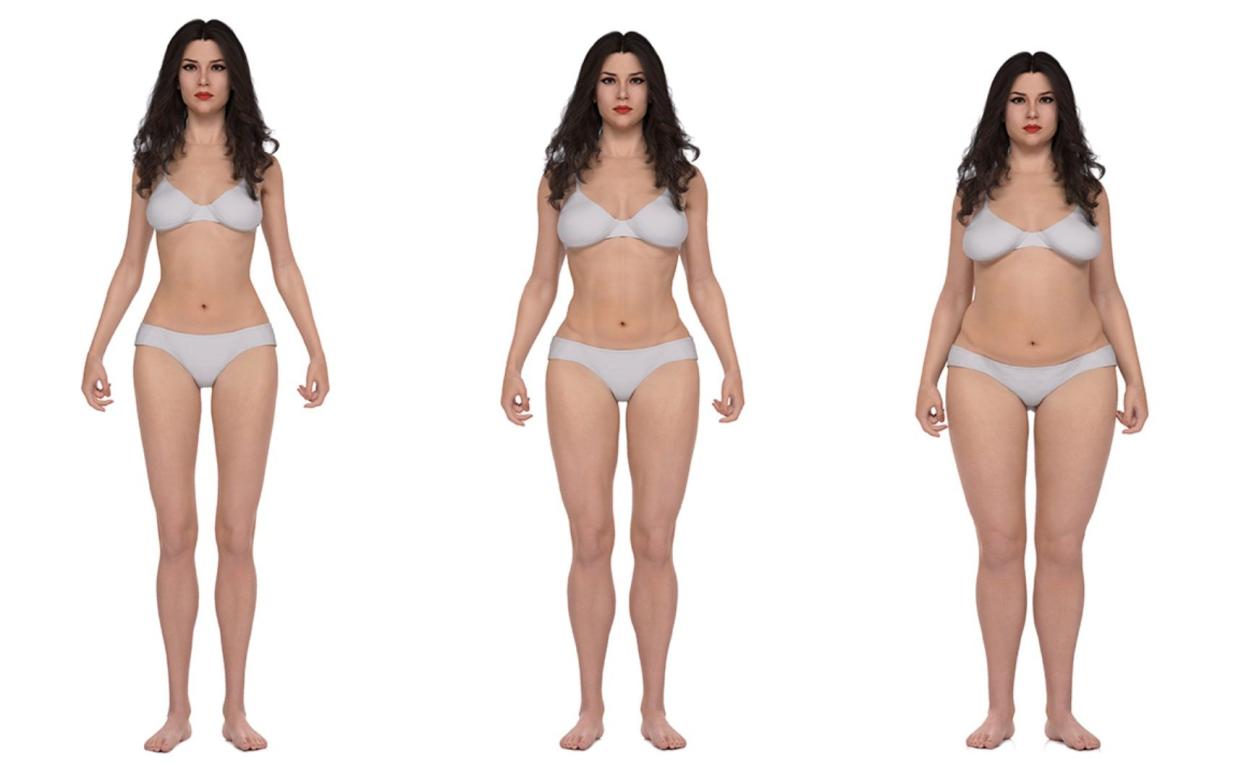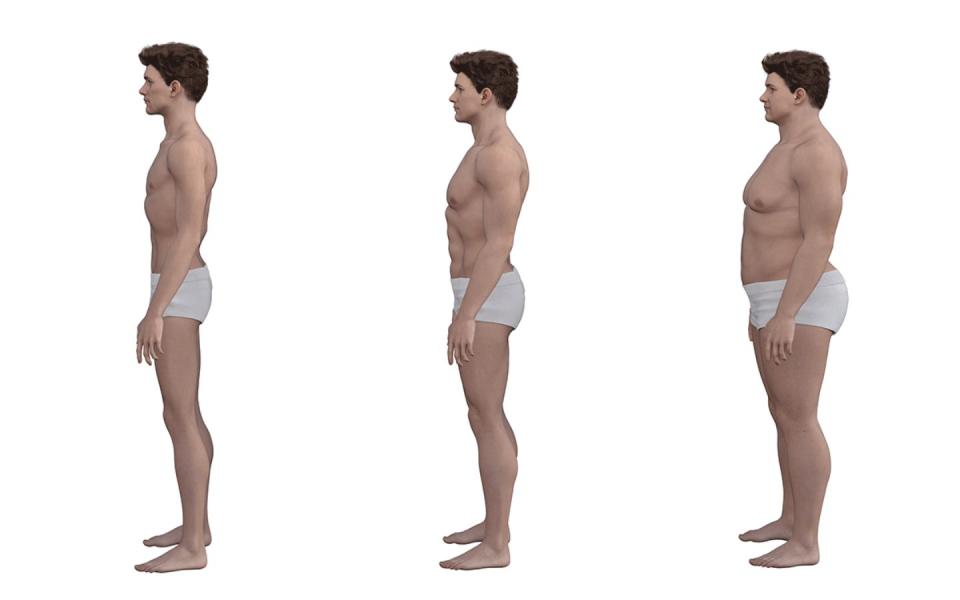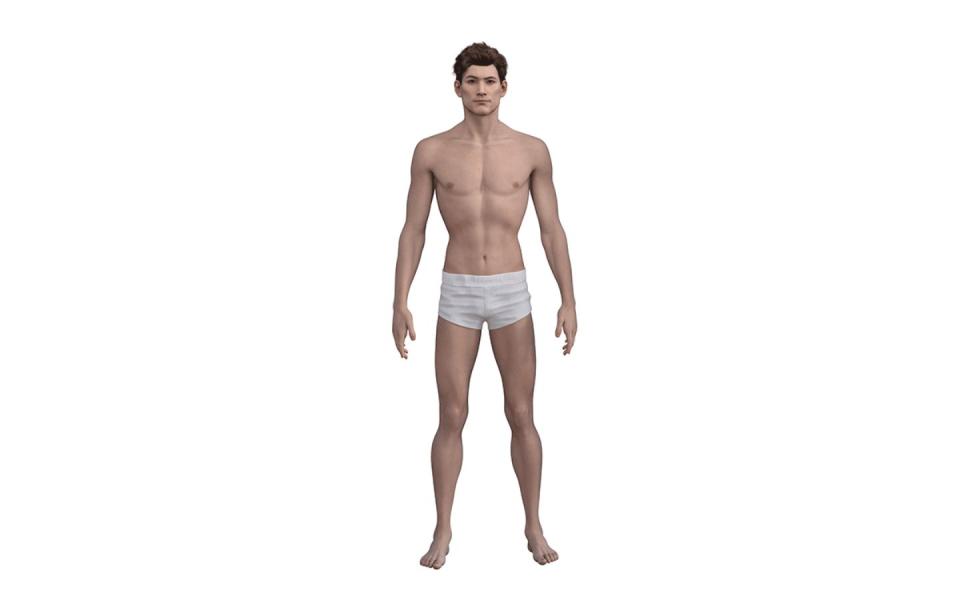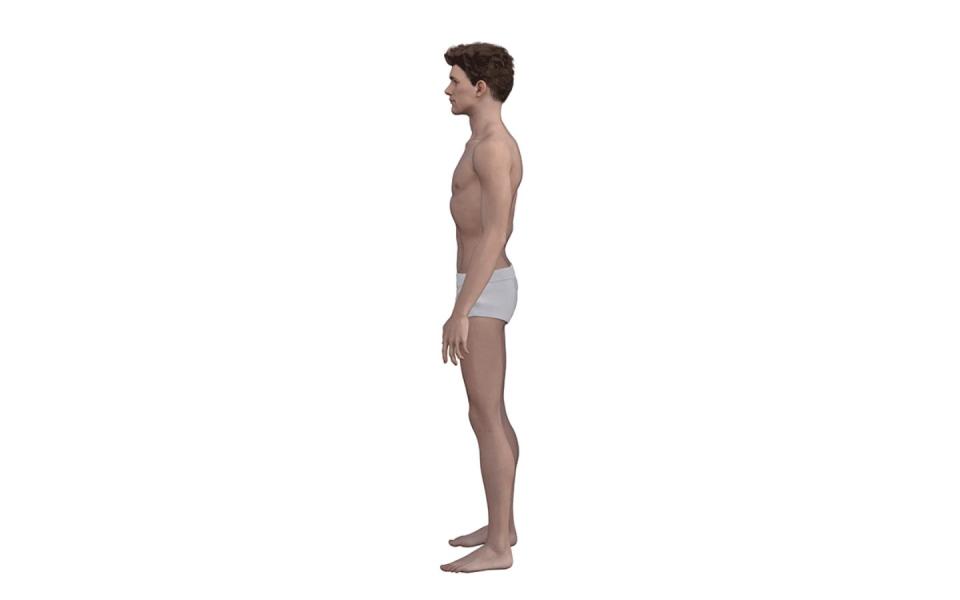Trying to lose weight? Understand your body type first

- Oops!Something went wrong.Please try again later.

It is a sad truth that not all bodies are created equal. There are those who grow tall and lean, while others are short and squat. Some struggle to gain weight while others have a harder time losing it. Some pile on muscle after lifting a few weights, others remain thin no matter what they do.
Between 1940 and 1942, researcher William Herbert Sheldon conducted research which led him to believe all humans fit into one of three “somatotypes”. This, he said, would explain these differences.
Endomorphs tended to be shorter, stockier, and more prone to weight gain. Mesomorphs were those with an even weight distribution and narrow waists, who gained muscle easily. Finally, ectomorphs were those who were tall and skinny, with long limbs, but who were naturally leaner, according to Sheldon’s research.
While the precise measurements for what constitutes each somatotype does have slight variations between men and women (mostly to account for wider average hip size among women) everyone will fit somewhere into the somatotyping model. And although many of Sheldon’s more outlandish theories have been dismissed (he thought that your body type could identify psychological traits) the body shapes he identified have become a popular shorthand for explaining the genetic and physical traits which make up our bodies.
How to identify your body type
A glance in the mirror is often all it takes to identify your body.
Ectomorph

Ectomorphic traits include being tall and lean with narrow hips, chests, and shoulders. You will tend to have longer limbs if you tend towards ectomorphism. The good news for ectomorphs is that they tend to have higher metabolisms and burn fat more quickly, finding it harder to gain weight in the first place. However, that can also make it much more challenging for them to increase muscle, so ectomorphs hoping to work towards a sculpted physique may struggle.
Skip to the diet and exercise tips for ectomorphs
Mesomorph

For people who are prone to mesomorphism, the body has a natural muscularity. They have narrow hips but broader shoulders and chests. Mesomorphic people tend to sit somewhere in the middle. They find it the easiest to grow muscle, but if they don’t maintain healthy lifestyle choices they can gain fat too.
Skip to the diet and exercise tips for mesomorphs
Endomorph

Finally, endomorphic people have a naturally wider frame, though they tend to be shorter. Wider hips and narrower shoulders tend to be associated with endomorphic people. Endomorphs have a propensity for gaining fat and find it harder to lose it, but can also gain muscle and become immensely strong with the right training.
Skip to the diet and exercise tips for endomorphs
How can knowing your body type help direct you towards your health and fitness goals?
Endomorph – what to eat and how to train
If an endomorph is focused on weight loss, “it can be really difficult and disheartening,” admits Annabelle Smith, wellness coach and founder of the Mindful Diet Coach. “However, as endomorphs like Adele and Oprah Winfrey prove, it’s far from impossible.”

Endomorphs looking to lose weight should consider calorie-controlled dieting, advises Smith, who suggests a 500-700 kcal daily deficit. “Traditional diets tend to work best for endomorphs, because they tend to be insulin dominant and store fat most easily,” she says.
“Think of your plate as follows: a palm sized bit of protein, a big handful with outstretched fingers of a good carbohydrate - vegetables and some wholesome grain like quinoa, bulgur wheat, or sweet potato – and then some healthy fats: avocado, olives, olive oil, nuts,” advises Scott Harrison, celebrity personal trainer and creator of The Six Pack Revolution fitness programme. “So you want 30 per cent protein, 60 per cent carbs, and maybe 10 per cent fats.”
On the plus side, endomorphs tend to be able to build muscle broadly across their body quite quickly. “An endomorph should definitely do some weight training, I’d suggest eight-12 reps, three-four sets, four-five different exercises, but I’d recommend that for all body types,” says Smith. “However, endomorphs have a lot of fast-twitch muscle fibres which tire quickly, but are great at bursts of power which high-intensity interval training prioritises. I’d definitely recommend endomorphs add a 10-15 minute [high-intensity interval training] session to the end of their weight training. That will help minimise fat gain too.”
Harrison says the ultimate exercise for an endomorph is the battle rope. “It’s technically a cardio exercise, but because you’re whipping a heavy rope, you get some good resistance training which will help endomorphs build muscle and get aerobic exercise at the same time,” he explains.
For endomorphs looking to gain muscle mass, a calorie surplus is necessary. “I’d suggest an endomorph won’t need a huge calorie surplus, maybe as little as 300kcal per day,” says Smith. “But be careful. It needs to be a ‘lean bulk’ – focus on high protein, high carbohydrate, and low fat foods, lots of fresh vegetables and meat.”
Ectomorph – what to eat and how to train
Tending to be naturally slimmer, the challenge for ectomorphs is gaining rather than losing weight. To other body types, that might seem a nice problem to have but it can be frustrating for ectomorphs looking for sculpted beach bodies.

Nutrition is just as important to an ectomorph looking to build muscle, as it is to an endomorph hoping to lose weight. “They want to eat all the calories and then some,” says Smith, who suggests an ectomorph needs a calorie surplus of around 700kcal per day to see significant muscle growth. “I wouldn’t necessarily recommend it, but ectomorphs can get away with ‘dirty bulking’ which is where you just eat a lot of anything to gain – it could be quinoa and chicken or it could be Five Guys burgers.”
In the gym, an ectomorph needs to focus on weights – deadlifts, squats, bench presses and other compound movements. “I’d tell them to focus purely on weight training, not cardio,” says Harrison. “I’d focus on low reps – maybe eight-10 reps per set, with heavier weights, and try to do them fast and clean.”
“They may naturally find it easier to do endurance exercise, which is fine if that’s what they are training for but if they are trying to gain muscle or get stronger, then they may need to go against some of their natural urges,” advises James Hutchison, founder of holistic wellness programme and personal training studio, pH7. “This could mean reducing rep ranges, increasing rest time, dropping down the duration and intensity of cardio exercise. It may mean giving them some shorter high intensity bursts of exercise to train a different energy system (using anaerobic exercise). A big focus on compound exercises to make sure they are training large muscle groups.”
Of course, with too much “dirty bulking” an ectomorph certainly can put on fat too, particularly around the stomach. However, because they tend to have faster metabolisms, ectomorphs don’t have to diet quite as intensely to lose weight. Smith suggests a daily calorie deficit of 300kcal tends to be enough for ectomorphic bodies to see results.
“If you’re not careful though, an ectomorph trying to lose fat can also drop muscle quite quickly as well,” Smith explains. “I’d recommend they keep up the weight training while trying to slim down, but adding in some low-intensity, steady-state aerobic exercise. Think long-distance running, cycling, swimming. They have slow-twitch muscle fibres which are slow to tire, so they’re built for that sort of exercise really.”
Mesomorph – what to eat and how to train
Trapped somewhere between the poles of endomorphs and ectomorphs, mesomorphs can go either way, sliding more towards endomorphy if they don’t eat well and exercise, but finding it slightly easier to shift the pounds if they do.

“Moderate cardio, moderate weight training – either would work for a mesomorph,” says Smith. “They probably need to have the clearest idea of what they’re looking for from their training. If they want to build muscle then they need to focus on weights like an ectomorph. If they want to lose fat they need to focus on cardio like an endomorph.”
To gain muscle, a 500kcal daily surplus of good quality proteins and fats are recommended, whereas to lose weight a 500kcal daily deficit is about right. “I’d recommend a fairly balanced diet of 40 percent carbohydrate, 30 percent protein, 30 percent fat,” advises Hutchison.
“A mesomorph is often seen as someone who is naturally very athletic and hold muscle and lean mass very easily – so results for fat loss and muscle gain may come a bit easier but if a mesomorph wants to do something outside of their comfort zone, such as train for an endurance event, then it’s just about making sure they give themselves enough time to train the correct energy system (so lots of aerobic work),” Hutchison continues. “It’s also making sure they slow themselves down (naturally they may prefer more intensity in their training), give themselves enough recovery time, and continue a level of strength training to help maintain their muscle mass when doing more endurance exercise.”
“I’d train a mesomorph very similar to an ectomorph if they wanted to build muscle,” says Harrison. “Biomechanically, they might be able to increase their reps to the 12-15 reps per set mark.
“You’d also get them to do it more slowly than an ectomorph, because they’ve got a bit more fast-twitch muscle fibre, so they’d benefit from going a bit more slowly and keeping their muscle under tension a bit longer.”
As such, a mesomorph would be better off following an endomorph’s training plan when they want to lose fat, and an ectomorph’s when they want to gain muscle.
Questions for the experts
Can you have multiple body types?
“The most important thing to note is that everyone is a bit of all of them,” explains Prof Gavin Sandercock from the school of Sport, Rehabilitation and Exercise Sciences at Essex University. “There are extremes, but broadly, most people will fit somewhere between each of the somatotypes, with elements of all three of them.”
A sumo wrestler for example, might be described as meso-endomorphic in that they tend to be squatter and fatter than the average person, but also need to be muscular. In contrast, the purest example of ectomorphy might be a female catwalk model who is very tall and thin, but even she will tend to have some muscle, putting her slightly towards the meso-ectomorphic range.
Somatotypes are usually plotted on a triangle with endomorphic, mesomorphic, and ectomorphic at each corner. The vast majority of people sit around the centre of the triangle, usually leaning slightly closer to ectomorphic or endomorphic. However, those with a lot of fitness and sports training lean towards the mesomorphic end.
Is your body type set for life?
“We all have a genetic potential for how much we can grow – height being the obvious example,” says Sandercock. “If you’re well-fed in puberty, most people will reach their maximum potential for height. It’s the same for muscle or fat. Some people’s genetics mean they have a higher ceiling for the amount of muscle they can build, or the amount of fat they can weigh down.”
In essence, those who have a higher ceiling for muscle growth we could describe as genetically mesomorphic. Those whose propensity for laying down fat is higher would be genetically endomorphic. And those who are genetically taller are naturally ectomorphic.
“For someone who is genetically mesomorphic, they will find it easier to make gains at the gym,” explains Prof Sandercock. “If you have 50kg of muscle mass, and your genetic ceiling is 100kg, you’ll find it easier to gain another 20kg, compared to someone who’s genetic ceiling is 70kg.”
However, even if you genetically tend towards ectomorphy, if you eat unhealthy foods and do nothing all day “you will still gain body fat,” says Professor Sandercock. “You might not gain as much fat as someone who leans towards endomorphy, but you can still become obese.”
This process is somatotype migration. It’s possible for all of us to change our degrees of endomorphy, mesomorphy, and ectomorphy to at least some degree. “Alright, so you probably can’t become too much more ectomorphic because height is entirely genetic, but a lot of these traits can be moved,” says Professor Sandercock.
“Ultimately though, knowing your body type is useful for managing expectations and setting targets. If you know where you are currently, and you know what body type you’d like to have, it can help direct your focus when exercising.”
By following the science it can be freeing to know your body type. If you’re naturally endomorphic, you will probably never have the gazelle-like frame of a catwalk model like Kate Moss, so why hold yourself to her standards? Why not look instead at the way another endomorph like Adele has transformed her fitness and health.

